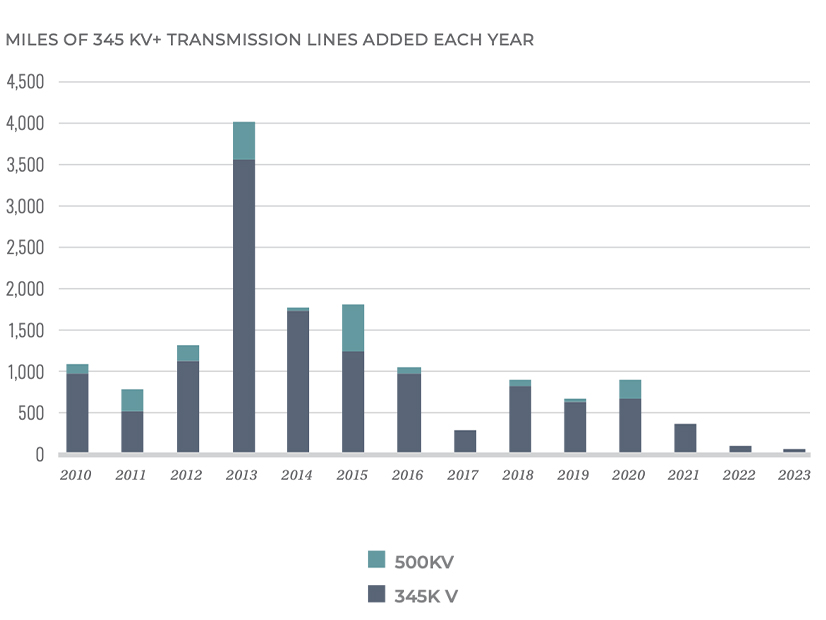ACEG found the U.S. electricity industry added just 55 miles of new high-voltage transmission to the grid last year, despite estimates the system will need to expand rapidly in the near future.
The U.S. electricity industry added just 55 miles of new high-voltage transmission to the grid last year, despite estimates the system will need to expand rapidly in the near future, Americans for a Clean Energy Grid said in a report released July 30.
“Fewer New Miles: The US Transmission Grid in the 2020s” was prepared by Grid Strategies with support from ACEG.
“The findings of this report are a wakeup call. With only 55 new miles of transmission built in 2023, we are not keeping pace with the growing demand for power,” ACEG Executive Director Christina Hayes said in a statement. “The slowdown in new construction not only impacts our ability to meet future energy needs, but also risks increasing costs for consumers and reducing grid resilience. It is essential that we address these challenges to ensure a secure, reliable and affordable energy future for all Americans.”
The U.S. Department of Energy’s Transmission Needs Study found the grid should expand by 57% by 2035, while Princeton University’s “Net-Zero America Study” found it would need to double or 80% of the potential greenhouse gas cuts from the Inflation Reduction Act would not be met, said the ACEG report. (See Will DOE’s Transmission Needs Study Spur New Regional, Interregional Lines?)
While 2023 saw few miles of new lines built, the industry spent $25 billion on the grid (a record high), with 90% driven by reliability upgrades and the replacement of aging equipment. The decline has been felt for years, with the country building only 20% as much transmission so far this decade as it did in the early 2010s.
“This trend began over a decade ago, when the average of 1,700 miles of new high-voltage transmission built per year from 2010 to 2014 dropped to only 925 miles from 2015 to 2019, and has fallen further to an average of 350 miles per year from 2020 to 2023,” the report said.
So far this year up to May, the industry has completed one major transmission line, adding 125 new miles from completion of the 500-kV Delaney-Colorado Transmission Project that links Arizona and California.
About 50% of recent spending is based on local planning criteria, which is usually below 345 kV and does not go through regional planning processes. Such lines focus only on reliability, ignoring maximized ratepayer benefits from multivalue projects, the report said.
The 2010s saw massive greenfield projects, especially in Texas and the Midwest. Texas’ Competitive Renewable Energy Zone program saw $7.5 billion invested in ERCOT lines to bring wind power to population centers, cutting wind curtailment from 17 to 0.5% and leading to unexpected benefits like solar development in West Texas and electrification of oil and gas drilling in the regions.
MISO’s Long Range Transmission Planning (LRTP) Tranche 1 Portfolio is another example, investing $10.3 billion to build out 2,000 miles of lines that offer at least 2.6:1 benefits to load.
Recent federal action like FERC Order 1920 and DOE’s Transmission Facilitation Program to help finance new transmission lines should help, but the report said private capital needs to be invested to expand the grid.
“Utilities are still currently incentivized to prioritize low- voltage upgrades focused on reliability and asset replacement,” the report said. “Both policymakers and regulators must capitalize on FERC’s issuance of Order No. 1920 to ensure the momentum brought about by federal action truly changes the incentives for transmission investment and helps spur a massive investment in the construction of new high-voltage transmission lines to ensure a reliable and affordable transition to a cleaner grid.”




